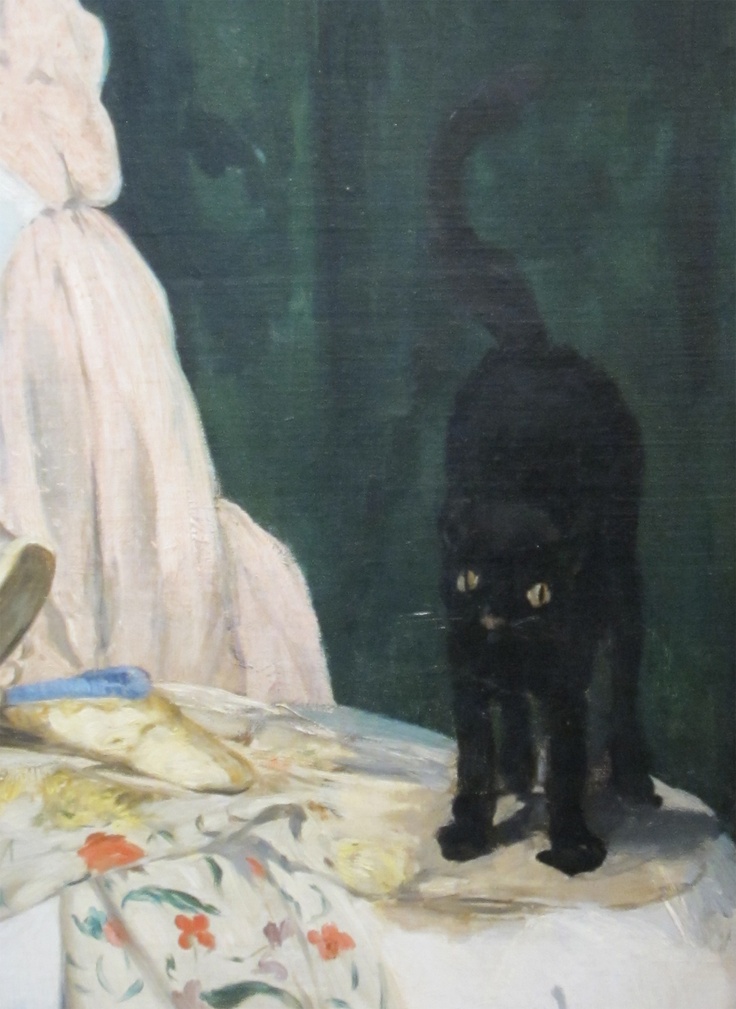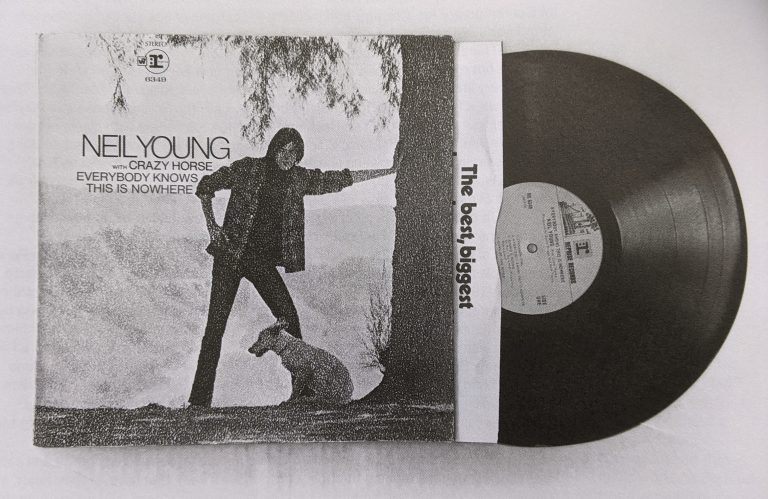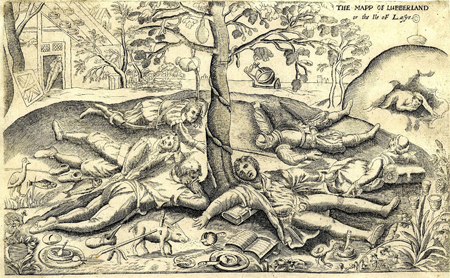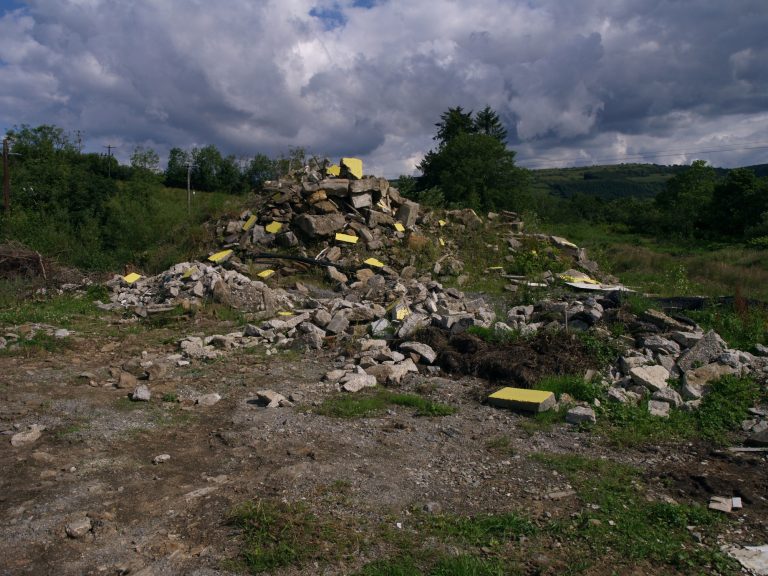“The unified quality of the thing is not noise at all, but is the sensual object itself…[T]he existence of a unified quality of things means that the sensual realm is already home to a certain ‘I do not know what’ that makes the marble a steady focus of my attention…we do not say je ne sais quoi in a spirit of gentle mockery, but as a true statement about sensual objects.”[1]
I recently joined art.sy. I had read about the site a few months back in Artforum and duly signed up to receive an invite when they were being sent out, forgetting all about it until a few days ago.[2] For those yet to learn about it, art.sy presents a new online facility for the viewing and buying of art. The intriguing thing about the site is not that it heralds a new way of appreciating art, or even interacting with it. The Internet has changed the way the world is apprehended, art notwithstanding: to point this out seems oxymoronic almost. Rather, what interests me is the manner in which the art presented on the site is sorted and categorised, in so doing being inserted into unforeseen contexts and arrangements: that is, by means of what art.sy calls ‘The Art Genome Project™’.[3] This system allows for the categorisation of some fifteen thousand works of art by three thousand artists on the website, according to the application of roughly eight hundred “genes”. Most artworks exist as a melange of some thirty to forty genes. These genes, in art.sy’s estimation, rest on the conceptual, art-historical or formal data that is deduced from the artwork itself, by a team of art historians and other professionals. So, presumably there is a “collage” gene and a “Fauvism” gene; but also, in all likelihood, a “green” or even a “cat” gene.
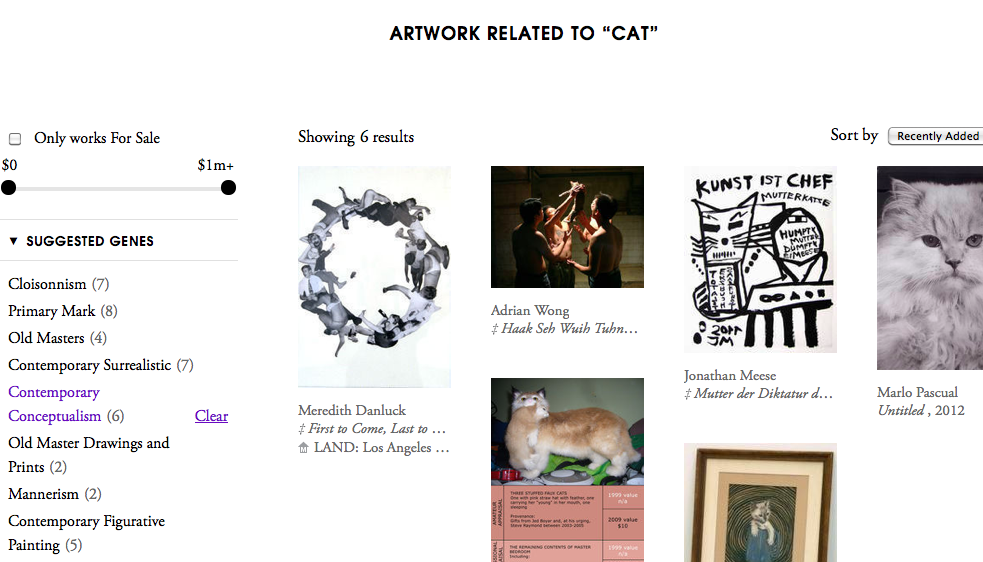
Screen shot from art.sy in a search for artworks related to “cat”, 07/02/2013; Website: art.sy.com
The categorisation of a work of art can thus be enacted not only by virtue of it belonging to a certain school or era, but also, somewhat arbitrarily, by whether or not a cat resides within the frame. Indeed, on entering the word “cat” into the search box at the top left of the screen and pressing enter, I get forty-one results, which can then be sub-divided into twelve further categories; flatness, primary mark, geometry, contemporary graphic realism, etc. Clicking on “flatness” to get, presumably, some flat pictorial felines, I am faced with a motley crew of six results, Manet’s Olympia sitting in a grid formation alongside works by Romare Bearden and Leland Bell, amongst others. The cat truly does appear as the sole unifying factor here. In this way, art.sy really is the place for collectors with unusually specific tastes: “A contemporary hard-edged colour field painting, predominantly magenta and with dimensions of at least nine by nine? No problem!” And while there are advantages to this specificity of approach, the Art Genome Project™’s system does seem to work hard to break down the actual specificity – better still, singularity – of the individual artwork. The work of art is reduced to a relation – between you, the viewer, your wishes and desires, and furthermore, between the artwork and the sum of other artworks that encroach upon this primary relation. Olympia becomes just one picture with a cat in it, rather than a singular aesthetic representation irreducible to genes. In other words, the ‘in-itself’ becomes the ‘in-itself-as-it-relates-to others’: the artwork becomes a code to be cracked.
Recently I had a conversation with an artist about the prospect of getting her work wrong. A child of post-modernism, prone to harbouring a kind of wistful, Adorno-esque residua modernism, I was quietly delighted to hear her say, yes, you definitely could. Not all readings are correct, she said, the work is not a space for projection; rather, there is a wrong and a right way to read the work, the right way following that of the artist’s intent. Now, I am not quite sure I agree fully with this position, but I do hold a great deal of sympathy towards it. All too often, a viewer or critic (myself included) approaches the work of art with already too much in mind, too many expectations, hopes or desires. Thus the work becomes the place where such tendencies are acted out, a catalyst if you will. The result is that the work of art becomes just one factor in a broad field of relations, its singularity utterly broken. However subscribing totally to the artist’s intent is not possible for me; the truth of the artwork is not reducible to the artist-artwork relation, either. If this were the case, an artwork would be seen once, the artist’s statement read, and the work immediately assimilated; there would be nothing to gain from the second, fifth or twelfth encounter. Going even further than that, arguably the artwork wouldn’t have to be experienced at all: depending on how articulate the artist was, his or her textual or spoken explanation might well be enough.
The question lingered on, and so shortly after the above conversation I asked an artist friend the same question: is it possible to get your work wrong? Her reply was in a manner completely divergent from the first, emphasising the open-endedness of her work, and indeed even welcoming this potential multiplicity of interpretation. But I cannot, after consideration, subscribe fully to this view, either. For me, then, the artwork is shaded by a relation, but does not exist solely as a product of one: something else subsists outside of any relational binary.

Edouard Manet: Olympia (detail), 1863, oil on canvas, 130.5 cm × 190 cm (51.4 in × 74.8 inches, Collection of Musée d’Orsay, Paris
Art.sy, like the first artist, views the artwork as a puzzle to be solved, a code to be cracked. More than this, both put forward a notion of this code as (a.) solvable, and (b.) stable. Once an artwork has been assigned a specific make-up it remains this way: both artist and website imbue the work with an ‘inner’ intransigence of taxonomy that no person or context can engender. However, art.sy does not share this code; the essential qualities or traits that make up an artwork are pointedly not divulged. The artwork may well change in relation to other contexts and artworks, but the “essential” qualities (to which other things bear a relation to) remain fixed, and secret. The first artist, on the other hand, forcefully articulates and transmits this code, “only this is what it means!” no longer unnamed, yet cordoned off from the dual influence of interpretation and context. And so it appears both positions hijack the artworks’ supposedly essential qualities or ‘in-itself’; the only difference being their respective positions on these qualities’ disclosure or transmission.
Now to the second artist: where is she situated within this horizon? For her, the code is constantly in a state of remodelling or flux, her interpretation of the artwork far from sovereign, even as its creator. If the work of art’s essential quality is sketched at all, it is as aporia: interminably slipping from comprehensive understanding, it eludes even its creator’s grasp. In such a way, even the denial of an ‘in-itself’ permits a fetishisation, albeit of a relation. Although the work exists ‘in-itself’, it appears as though this is constantly being altered and remade as it pertains to a relation, not only the ‘artist-artwork’ relation but also the ‘artist-artwork-receiver’ (critic/viewer) triad. This positioning, although diametrically opposed to that of the first artist, paradoxically holds much in common with that of art.sy, also. Both share a ‘correlationist’ perspective of the work of art, in that the work of art’s essential quality is fundamentally that of a relation (between the viewer and the artwork; between the artwork and others on the computer screen, etc.). The ‘in-itself’ of the work of art, if there is one, is a product of this relation; it is neither fixed nor essential, but constantly in flux, a product of overlapping entities and contexts.
This viewpoint, of course, will be a familiar one to anyone with even a passing interest in contemporary philosophical thought, particularly that of French philosopher Quentin Meillassoux, and the speculative realism school more broadly.[4] Meillassoux’s Après la finitude [5] (2006) acts as a riposte to the legacy of phenomenology, which Meillassoux predominantly blames for the contemporary dominance of what he terms ‘correlationist’ thought. This mode of thinking emphasises the pre-eminence of the subject-object correlation, and as such negates the possibility of the ‘in-itself’ of any object. Contra this position, Meillassoux and speculative realism broadly put forward the notion of an ‘in-itself’ independent of the subject-object relation; that is, indifferent to language, consciousness, etc. This Meillassoux does by using the example of the ancestral fossil (‘arche-fossil’): dating from a time anterior to human ‘givenness’, this fossil proves an irrefutable challenge to the correlationist: how can she think of this object as existing only by virtue of a relation, even though it exists as remnant of an era prior to all (human) relatedness? This object, in short, has qualities that subsist – and indeed have done so – outside of the subject-object correlation. These qualities, for all intents and purposes, are actually indifferent to that relation.
Meillassoux argues that such properties are those given only by mathematics, which alone can be thought in absolute terms by being able to function outside the remit of human relatedness. Thus speculative realism in effect absolutises mathematics, for it alone remains unaltered (and humanly unalterable) in the absence of human givenness. Which, in a strange roundabout way, brings me back to art.sy. Through its idiosyncratic classification, the artwork is reduced to a code: more than that, a secret, absolute code – one that remains intransigently static irrespective of context.[6] However, art.sy’s is an absolutely correlationist code, born only of an impartial and finite human relation. What art.sy effectively achieves is the formulation of a pseudo mathematics, the illusion of infinity where there are only the short-term gains of economy and reputation. After all, who are the individuals responsible for the assignation of genes? Where do their allegiances lie if not with profit?[7] Tangentially, and taking a wild example: say the cat population of the world becomes infected with a deadly and wholly unaesthetic virus, the net result being a universal and irrevocable aversion to felines. In every other regard, remarkably enough, the world is virtually unchanged. Now, would the value of imbuing a work of art with a “cat” gene be a constructive thing to do in such a scenario, hypothetical though it is? No it would not: no one would want to look at, let alone buy, a depiction of a cat, and so the feline gene would become inevitably debased. Similarly, in the wake of 9/11 any depiction of a skyscraper would necessarily suggest a plane crashing into it – that would have been a morbid, but wholly natural, thought progression. Now with this any depiction of shiny metropolis, skyscrapers gleaming in the sunlight, would have been unsavourable to the point of insensitivity; in short, the ‘skyscraper’ gene would slip drastically down the scale of desirable genes, most likely dragging other related ones down with it. Thus two structural hierarchies of genes exist with regard to art.sy’s system; one that makes artworks less or more desirable by virtue of their most defining genes; and another, which pertains to the genes’ specific arrangement within a certain artwork, which is dependent on how relevant each one is with regard to it. Both hierarchies are neither stable nor neutral, but instead always in a kind of relationary flux: imagining a stock exchange of genes comes close.
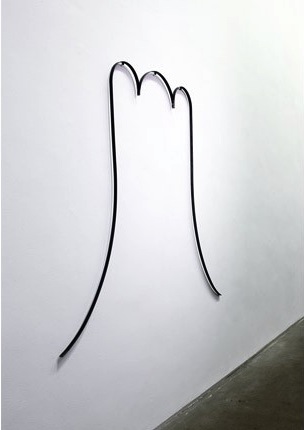
Aleana Egan: Room after room (2012), Steel 170 x 140 x 2cm; Image held here.
This may all seem a bit obvious, like it almost doesn’t need to be said. For me though, the art.sy conundrum neatly articulates a paradoxical desire accompanying any consideration of the art object: a petulantly divergent two-pronged desire, that is, furthermore, absolutely crucial. Two incompatible breeds of expectation are at work here, the art object thus becoming the site of a virtual tug of war. For the thought of art.sy being an apt vehicle for the systematic treatment of art remains an aberration; “‘Olympia’ cannot be reduced to a configuration of so-called genes!” Indeed there is a real vehemence present when the art object is couched in such reductively comprehensive terms. But curiously this intensity can also be matched when art is described by virtue of its ineffability or elusiveness: “For Christ’s sake, it’s just a painting – a configuration of line and shape in pigment on canvas – with a cat in it!” This dual nature is why the thought of speculative realism heralds not only a kind of ecstatic, nihilistic freedom (from relativism, from anthropocentrism, etc.), but also a kind of ontological dread: the object is indifferent to me; to language, and human mastery: that a certain something else simply doesn’t need me. This applies to all objects; dead, inert and separate, not only those described as ‘art’. A Moebius strip in-itself, the object forbears any attempt to exhaustively subdue it. For if I had full mastery over it, it would no longer fascinate; at the same time, if the potential of mastery was not present, neither would it hold me there. In it there must be present a promise, but one whose deferral is neither relational nor symbolic, but structural.
In conclusion, I wish to say that I had previously considered writing another essay, much different from this one. That essay would have served as a guide to the one you read now, if it had been written, and it may be yet. Using the form of a paragraph, the essay would comprise perhaps five or six of these condensed essay forms, and each would deal with the same work of art; the intention being to practically elucidate questions begged by speculative realism and, in a different way, art.sy. Both appear to take up the artwork’s challenge, or at least attempt some semblance of a re-evaluation. But to spend time with the work or art is always a question of its continued re-evaluation. Truly engaged consideration inevitably enters the same endgame as speculative realism, whilst at the same time negating any claims made by art.sy as to the essential, intransigent – but ultimately graspable – properties of the work of art. The work of art I was to write about is by Aleana Egan, that recently rested, slender and calm, on the walls of the Douglas Hyde Gallery.[8] Its title is Room after room, and it has stayed with me, somewhat inexplicably, from the first time I saw it.[9] It is complete in that it dictates nothing: about it, or me, or how that relation should be performed. It provides the open place for a thought, but a thought that attempts to think it through materially, as an object. For although it means something, the artist’s intent being most likely the strongest guide for figuring that out, even that is not enough: “I hear you say what it means, but…” This openness of the work is that of an ill-defined promise, but a promise that always remains a promise of something. And though the artwork’s promise might be deferred, necessarily and structurally, its fulfillment is always tangible, necessarily and structurally, too.
Rebecca O’Dwyer is a writer and researcher currently based in Dublin. She holds a BA Fine Art Sculpture (2008) and MA Art in the Contemporary World (2010), both from NCAD, Dublin. In 2012 she commenced a doctorial research at NCAD, focusing on the figure of transcendentalism in contemporary art.
* This essay was originally published in Paper Visual Art Journal’s Limerick hard copy edition last August. We will be shortly making the PDF of the hard copy available on the site.
______________
[1] Graham Harman (2007) On Vicarious Causation in Collapse Vol. II Speculative Realism. London: Urbanomic, pg. 214
[2] The article where I first learned about the project was Michael Sanchez Pandora’s Black Box, Artforum, March 2012. Available at: http://www.artforum.com/inprint/id=30331 (Accessed June 2012)
[3] Presumably, that ™ is there to supplement the system with even more gravitas.
[4] Speculative realism takes its name from a conference held at Goldsmiths College, London in April 2007. The conference featured presentations by Ray Brassier, Iain Hamilton Grant, Graham Harman, and Quentin Meillassoux, and was chaired by Alberto Toscano.
[5] This then appeared in English translation as After Finitude (2008), trans. Ray Brassier (London: Continuum)
[6] The choice of the word gene, also, is very interesting. For me there is a kind of odd religiosity present in the equivalence between the biological and the aesthetic domain. The artwork, like the person, is formed and bound by this configuration of genes, but the primary aesthetician/biologist remains absolutely out of the frame.
[7] Although art.sy claims pedagogy as a crucial motivation of the venture, a quick look at some of its main investors makes it difficult not be cynical: they include Dasha Zhukova, founder of Moscow’s Garage Center for Contemporary Culture; Wendi Murdoch, film producer; Peter Thiel, founder of Paypal, board of Facebook; Josh Kushner, managing partner of Thrive Capital; and Jack Dorsey, creator of Twitter.
[8] Egan’s solo exhibition day wears at the Douglas Hyde Gallery ran from June 1 – July 18, 2012.
[9] Room after room (2012), Steel 170 x 140 x 2cm. An image of the work available here: http://www.marymarygallery.co.uk/index.php/gallery/category/C2/aleana_egan/P3/ (Accessed: 4 July, 2012)
–

